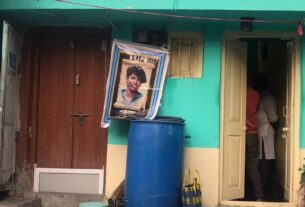A private wildlife hospital rescued more than 700 birds entangled in manja over the past two years.
Chinese manja, glass-coated synthetic string is still being used to fly kites despite a ban. More than half of the 749 birds rescued by the People for Animals (PFA) wildlife hospital, in Kengeri over the past two years were entangled in these strings.
Dr. Nawaz Shariff, the Chief Veterinarian of the PFA wildlife hospital, said that earlier people used cotton manjas to fly kites, and though the birds got entangled, they would break these threads and free themselves. But when the Chinese manjas came into use, it became impossible for birds to get out of it. In the process of escaping, their wings get more entangled, and eventually they break their bones.
In 2021, the hospital rescued 543 birds that were trapped in manjas, and as of October 2022, the number of birds rescued is 206. The hospital administration also says they are expecting more cases in the near future.
Chinese manja, which are cheap and several times stronger than conventional cotton manjas, are made up of nylon or glass-coated synthetic string. Their use was banned by the National Green Tribunal (NGT) in 2017, following a Delhi government notification. The ban came in 2016 in the aftermath of the death of two children whose throats were slit by these strings. Ornithologists say such strings, which are made by melting and mixing synthetic polymers, never degrade quickly into the soil. Incidentally, these strings are called Chinese manja, but are made locally.
Prof. S. Subramanya, a former faculty member at the University of Agricultural Sciences, Bangalore, and a co-author of the report Kite flying: Effect of Chinese manja on birds in Bangalore, India said that, “Ordinary cotton threads are not a problem unless those are coated with powdered glass. When Chinese manjas came into the market, then it became more dangerous.”
Raghu, a resident who informed PFA wildlife hospital of the recent manja rescue in Yeshwantpur said “Usually I go to smoke on my terrace around 11.30 in the night and it was then I noticed a crow entangled in a manja at the top of a tree. My neighbour said that it had been there for the past one and a half days. I immediately informed the hospital and then they came and rescued the crow.”
A case worker from the Office of Deputy Conservator for Forest (Urban Division) said that no cases of Chinese manjas have been reported yet. She added that, “If any of such cases are found, actions will be taken on offenders under the Indian Forest Act and fines will be imposed against them under the guidance of the Deputy Conservator.”
Whereas, Dr. Nawaz Shariff said that “I’ve personally written and sent emails to the Principal Chief Conservator for Forest (PCCF), the Bruhat Bengaluru Mahanagara Palike (BBMP) Commissioner, the Fire Department and the Chief Minister to implement the ban on Chinese manjas on the ground,but none of them have responded yet.”
Abdul Shukoor Rahmani, who works at Barkath Kite Center in Shivaji Nagar said that “We don’t sell Chinese manjas in our shop, as we know they are so harmful to the environment. If someone is selling such things, we will be the first to call the police and make sure they get arrested.”
J N Prasad, a bird enthusiast based in Bengaluru said, “It need not be those who fly the kites who use this thread, even people like cable operators use such threads to draw cables across the streets.”
Prof. Subramanya said that the way forward is by making the public aware of the seriousness of the matter. “Greater level of awareness should be created and people need to be educated. There should be a sustained campaign on the internet to send out a plea to stop using this Chinese manjas. A separate cell should be constituted by the local municipalities under the network of volunteers where people can report such cases of rescues easily,” he said.
- A new video and some images have been added to this article later.









Great story! The interview is also a great addition to this story. Good work Ajay!